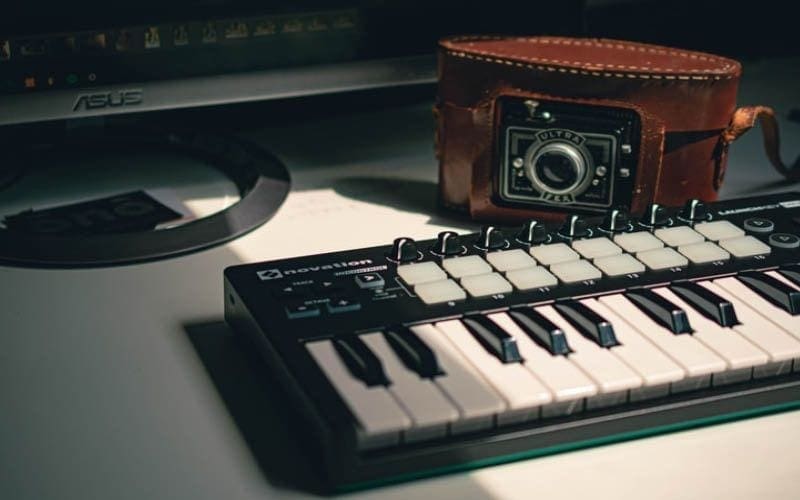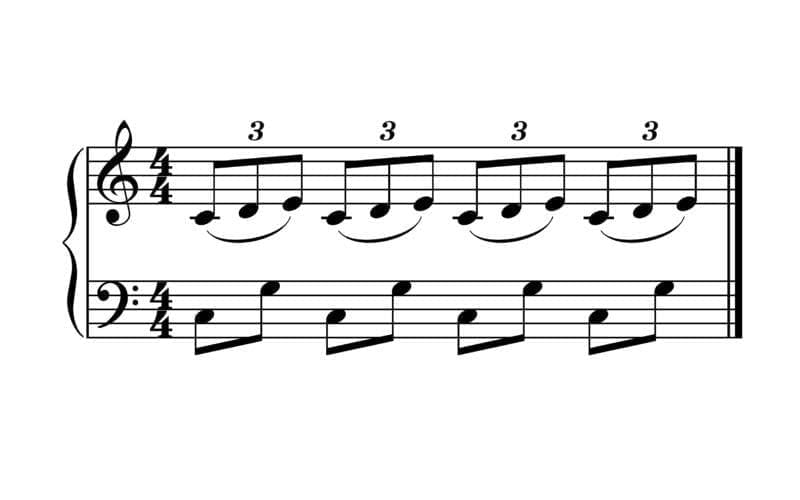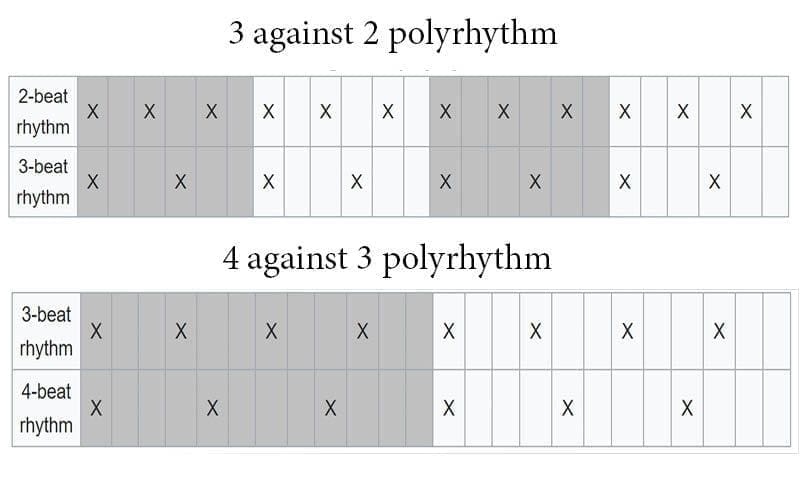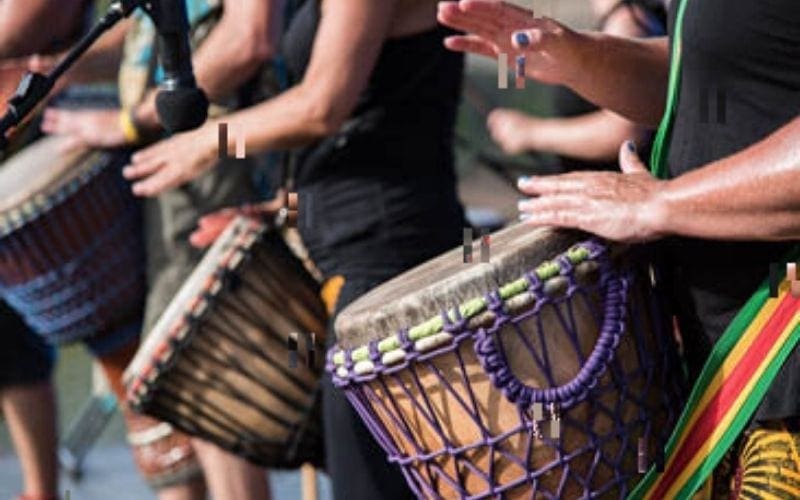4/4, 6/8, or 2/2 rhythms are what most modern music is centered around. The 4/4 beat is used to make music memorable and easy to dance to – especially in the world of techno and is what makes you get pop songs stuck in your head. However, by polyrhythm definition listening to tracks that follow the same square beat can get boring. Music that strays away from these typical beats sounds more interesting rhythmically – and so, enter polyrhythm! Metal, jazz, and even music from hundreds of years ago all include polyrhythm. In this article, we will take a look at what polyrhythm definitions are, how they are featured in different genres, and how to incorporate them into your own music.

What Is A Polyrhythm Definition?
A Polyrhythm definition is this: beats within songs that are layered and more complex. These rhythms contain two or more unrelated beats that are intertwined together in one song simultaneously. These layers of rhythm can be the foundation of the song or a small section of a track.
In contemporary western music, most rhythms have an emphasis on a beat in a section. Different beats are stacked on top of one another, which gives a more unique, complex, and “fuller” feel compared to popular Western music.
Below is an example of doublets and triplets in a 4 section:

Widely Used Examples Of Polyrhythms

Below are a few examples of some of the most common polyrhythms that appear in music.
African Music Traditions
Traditional music originating from Africa formed the basis for many of the polyrhythm heard in modern music. These traditional musical pieces were played on various handmade percussion instruments by groups of people. The music featured complex yet up-tempo sounds that were easy to dance along to. In many African cultures, these types of music are very important, and carry a social purpose to unite people together and are used to express shared cultural ties.
Traditional African music incorporates rhythms in a few different ways compared to typical western rhythms. There is a lot of emphases placed on the primary beat in western music, and a lot of emphasis on secondary beats in traditional African music. As the use of rhythms here was developed by slaves, the layers are also used to tell a story. Lighter primary polyrhythm definitions on certain instruments were played alongside another rhythm (usually played on the drum) which delivered a secret message that could not be understood by invaders or slave owners.
To see how polyrhythm is used in traditional African music, watch the video below of famed African drummer Babatunde Olatunji:
Here, different rhythms are played simultaneously on different instruments within the djembe rhythm. The complexities of this music have had a major impact on today’s music and its influences can still be heard in modern-day music, especially Afropop and afro-swing.
Polyrhythms In Jazz Definition
Polyrhythm is widely used in Jazz music. Unsurprisingly, jazz was one of the first genres of western music to draw inspiration from beats heard in African traditional compositions. “Afro Blue” by Mongo Santamaria is an early example of a jazz standard inspired by a typical African 6:4 cross-rhythm.
The Polyrhythmic drum solo heard at the beginning of the song probably sounds familiar, as these patterns and sequences are featured heavily in Afro-Cuban music. As the song goes on, you will begin to hear more polyrhythmic sequences played on different instruments, yet the Djembe drum beat is still the foundation of the song and is consistent throughout. Whilst listening, also take note of the different beat patterns. The lack of a 4/4 loop pattern almost makes the music sound unpredictable.
Another example of Polyrhythm in jazz is pieces by the drummer Elvin Jones. The djembe rhythm influences can be heard in compositions with two cross-beats over every measure of a 3/4.
Polyrhythm In Metal Definition
Many newer genres of music such as rock, metal, and indie rock are centred around simple rhythms and time signatures. However, artists have become more experimental in their music writing and music. In order to stand out against others, artists started to play around with loops and patterns to create more distinctive, fuller-sounding tracks. Complex layering and unconventional rhythmic patterns can now be widely heard in music spawning from the underground metal scene.
Trent Reznor of Nine Inch Nails is best known for the experimentation and the almost improvised sound of his music. Much of his music uses the polyrhythm definition in a completely novel way, whilst altering noise, dissonance, and other effects. See an example below:
Polyrhythm In Other Popular Music
Afro-Cuban music widely uses polyrhythms in Rumba. 3-based and 2-based are often incorporated simultaneously, i.e. a lead drummer might play a 6 against 8 beat whilst the rest of the band sing or play a two-beat conguero. Key Afro-Cuban artists in the 50s and 60s shaped the way polyrhythmics music was used in jazz and later popular genres of music like R&B. A lot of IDM and house producers are starting to use polyrhythms more in their music to make their beats more distinguishable.
Polyrhythms also feature in Carnatic music and other types of Indian classical music, and specially designed instruments and tools were used to create highly complex polyrhythm definition.
Cross-Rhythm & Learning Polyrhythm

Getting to grips with cross-rhythms is crucial if you want to use polyrhythms in music. A cross-rhythm denotes the systemic layers of rhythm. Straightforward cross-rhythm used in polyrhythms are 3 three notes against 2 (or 3:2 polyrhythm), four against three (4:3 polyrhythm), or 4 notes against 5 (4:5 polyrhythm – expressed above). Bonus – these can easily be keyed into any DAW.
Being able to read sheet music that has two or more rhythms will also help you to realize and understand the polyrhythm definition. The below image demonstrates 6 cross-beats per measure of 12/8. (6:4), which can be heard in compositions such as Afro Blue.

Best Ways To Incorporate Polyrhythm Into Music
Want to give your listeners something a little more interesting to listen to? Firstly, open your DAW, go to your MIDI editor (or arranger or piano roll depending on your DAW), and change the value of your grid. If you want to make polyrhythms based around triplets, split the MIDI grid into 24 or even 48ths. From here, you can make a really distinctive-sounding rhythm using 4 against 3 or 2 against 3 loops. By adding in two or three different percussion sounds from a drum kit, you can get started easily.
To fill the track up more, you can also add in another sound such as claps or snares on a 4 against 3 beats. You should be starting to hear how interesting a beat can sound just by using a less conventional pattern. This is the beauty of polyrhythms. Now, you can play around with layering and adding in sounds, and maybe even try incorporating effects that aren’t widely heard in music. This could take you down the road to producing a track this is truly unique!
Watch the video below to see more ways how you can create polyrhythms using Ableton Live:
Examples In Music
Although this article references the use of polyrhythms in distinctive pieces, sometimes these simultaneous beats are not always heard in songs. Whilst the typical 4/4 beat is used widely throughout music, many musicians have incorporated polyrhythms (albeit on a very minor scale) into their music. If you are still struggling to see how to add polyrhythms into your music, we have listed a few more examples to get the creative ball rolling.
Aphex Twin – Window Licker
Here, Richard D. James cleverly combines simultaneous rhythms of different beats to create the laid-back feel that makes this a much-loved classic.
Zomby – One Foot Ahead of the Other
Zomby created this almost racy vibe by using various techno sounds on different loop patterns. The use of polyrhythms in techno is very important so that songs don’t sound too repetitive that they almost blend together with other techno tracks.
Summary & Conclusion

For many artists, writing and producing music that is unique sounding and distinguishable is tricky. Many also worry that not following well-known musical patterns, such as a 4/4 beat, will result in something no one will like. In fact, it is the opposite! The artists mentioned in this article have developed a large following based on their refreshingly different sounds of music.
Musicians can produce songs using a simple two-variation polyrhythm, or embark on a really complex project, layering many different beats on top of one another. There are endless possibilities for polyrhythms. You can even find polyrhythm generators online to help give you a better idea of how to begin. Another great thing about polyrhythms is that their use of them is not genre-bound. Any artist from any genre can use polyrhythms to their advantage and make something that is nothing like what we have ever heard before!
Now that you know all about polyrhythms, you can hopefully start experimenting with them in your own music.










